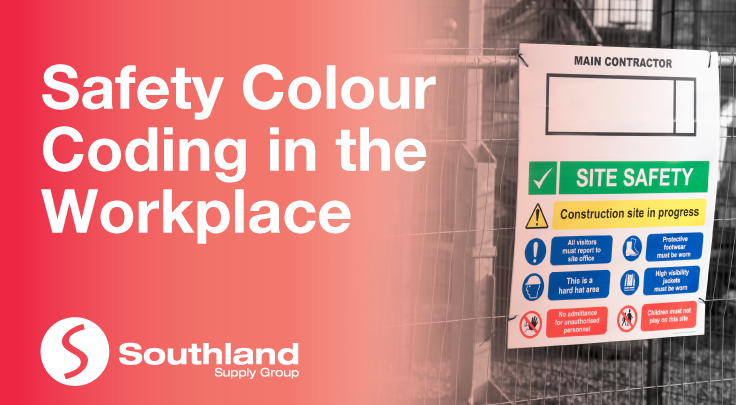
Many businesses use safety training programs to help keep their team members safe. Implementing a standardised system of safety colours is an important part of an effective program. Learning more about safety colours and the hazards they represent can ensure protocols are followed and accidents are prevented, leading to a safer work environment. In this blog, we explain what safety colours are, what their importance is, and how they can help you stay safe in the workplace.
Safety colour standards
OSHA standards
The Occupational Safety and Health Administration (OSHA) is a government organisation that creates and enforces a safety standards for businesses in all industries. OSHA focuses primarily on physical hazards in the workplace, such as fire hazards and slipping hazards. This standard involves the colours red and yellow to indicate different levels of hazards.
ANSI standards
The American National Standards Institute (ANSI) is a private organisation that constructed an additional safety colour system to further improve safety in the workplace. There are times that OSHA and ANSI work together to ask companies to follow these guidelines. For instance, OSHA may use and enforce the ANSI colours to help keep professionals safe.
Some of the benefits of installing signage in the correct safety colour codes include:
- Decorates the environment.
- Increases efficiency and productivity.
- Improves the quality of workmanship and normal skill.
- Improves labour morale and interest in work.
- Reduces accidents and increase safety.
- Reduces absenteeism.
- Raises the standard of good housekeeping.
- Improves building and machinery maintenance.
- Reduces hidden costs of dull and gloomy atmosphere, and
- Improves overall psychological and physiological effects on workers for better work performance.
A lot of companies use a combination of OSHA and ANSI standard colours to help keep employees safe. Here is a list of the most common safety colours you may see in the workplace:
Red – The colour red signified danger. OSHA recommends using red, or predominantly red, for danger signs or tags, with lettering or symbols in a contrasting colour (usually white against the red background). Red is also used for fire apparatus and equipment, safety storage for flammables, and safety devices such as switches for emergency stopping of machinery, stop bars, and buttons.
Yellow – Yellow signifies caution. This colour is often used in cones & stands, security signs, & warning signs. These signs and tags are all yellow, or predominantly yellow, with lettering or symbols in a contrasting colour (usually black). Additionally, yellow is also mostly used for physical dangers such as slipping, tripping, falling, striking against, and pinch points.
Orange - Orange colour signifies warning. Safety signs that use orange colour generally have black lettering or symbols. Orange is often used for potentially dangerous parts of machinery or equipment that may cut, crush, shock, or otherwise injure a person.
Green - Green colour signifies safety instructions such as entry and exit signs. These signs usually have white lettering against the green background. Some part of the sign may also contain black lettering against a white background. Green colour is also used to designate first-aid equipment, emergency eyewash stations, and so forth.
In any business, all employees should be trained to understand the colour-coding system. The colour coding on safety signs and tags should certainly be among the elements covered in safety orientation so that new workers become thoroughly familiar with the system during their first few days on the job.
Regardless of how it is done, it is the employer's responsibility to ensure all employees are up to date with the latest safety colours. This will not only keep the employees and facility safe, but it will also help avoid any risk of being out of compliance with OSHA and ANSI regulations. For any safety equipment needs, contact Southland Supply Group at 1800 77 22 91 or visit our website at https://www.southland.com.au/
